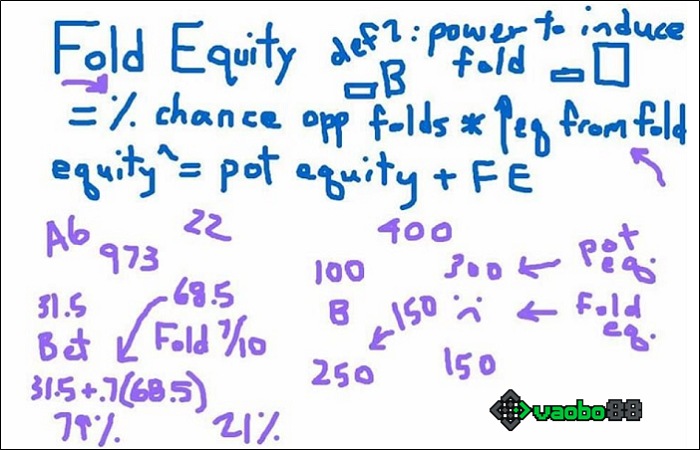Steal Poker is a term that refers to the act of stealing when playing online Poker for money to help players increase the prize pot if they win.
This is not a new trick for the community of experts who have many years of experience.
However, if you are a newcomer, you need to pay attention to 8 basic factors to ensure a successful steal without counterproductive effects.
What is Steal Poker?
Steal Poker is understood as the act of a player trying to steal all of an opponent’s chips when the blinds are high to ensure the opportunity to continue competing in the next rounds.
Typically, this stealing action will appear in classic Poker hands in tournaments.
Most players have tried to bluff a calling station player to steal the pot for a significant profit.

What is Resteal in Poker?
Resteal is understood as the act of a player stealing from other thieves. Specifically, you notice a player intending to steal the pot when they make a large raise and decide to raise even larger to reclaim both the blinds and the dead money along with the amount of chips the opponent just put in.
Usually, thieves in Poker do not have strong hands, so they can easily give up if someone catches their hand and steals back.
The amount of money or chips you gain from resteal is often much larger than from a normal steal if the strategy is executed correctly.
#8 Effective Steal Poker Tips from Experts
Sometimes, stealing may not succeed if your chosen opponent does not fold but calls all the way or even re-raises to resteal.
Therefore, a smart player needs to keep in mind 8 tips as follows:
1. Choose the right position at the table
To understand the importance of position when playing steal, I have the following example:
- $1–$2 with 6 participants and a stack of $200.
- You hold the hand: 7♣ 6♣
- 1 player raises $6 => Steal with 7♣ 6♣ has a chance of success => You 3-bet $24 => Opponent calls and checks at the flop => You bet an additional $35 => Opponent folds.
In some cases, the opponent or 1 SB may still 4-bet against you, but this situation does not occur frequently.
You will still gain profit from stealing in this hand, and don’t forget that hoping to hit a good hand on the flop is just a bonus while the main plan must be to steal.
In another case, if you still have a hand like above but have no good position, stealing requires quite a lot of cost and poses a significant risk as the opponent can easily read and observe you.
2. Pay attention to the stack
A deep stack makes stealing easier because opponents do not want to risk their entire stack just to attack you back.
Thus, stealing depends heavily on both the player’s stack and the opponent’s. If the opponent wants to restack but both your stack and theirs are small, the chance of success is not high.

A player with an average stack combined with a decent hand can definitely counter the resteal of a player with a small stack even after a 4-bet all in.
For example, consider the following situation:
- $1–$2 with 6 players, stack $400.
- You open raise to $6 in CO => BB 3-bets to $18 => You call.
- Flop comes K ♠ J ♠ 4 ♣ => Opponent checks => You bet $30 => Opponent check raises all in => You call.
- At this point, the opponent has K♣Q♠ => Your winning percentage is only 14%.
So where does the mistake come from? It arises right at the pre-flop round when you and the opponent both use 9BB, while the opponent has 21BB left, making it certain that folding on the flop will not happen.
In such situations, players will definitely choose to check raise to all in and have long-term profit.
Your open raise in CO is not a big issue, but calling 9BB to see the flop when the stack is only 21BB is truly a disaster.
If I were you, I would fold the hand immediately.
3. Limit Opponents’ Participation in the Pot
Next, we come to an example demonstrating that limiting opponents’ participation in the pot makes stealing easier:
$1–$2 with 6 players
You have A♦ 5♦ and are sitting in UTG => If you want to open raise, you need to consider whether any players will 3-bet or not? The answer is yes, then fold the hand.
The ratio of opponents holding top pairs like A or K or AK is 1/30, so among 5 opponents, there is a 1/6 chance that a player will 3-bet with your raise.
In another scenario, when everyone folds and only 2 opponents remain, the probability of getting a 3-bet drops to 1/15.
Thus, the fewer players there are, the easier it is for you to have a big hand.
4. Choose the Right Opponent
- $1–$2 with 6 players
- You sit in BTN with A ♥ 9 ♥ and raise 7%
- BB will 3-bet even though they are not an active player, so there is a high chance they have a big hand.
=> You should fold because the chance of winning is not high.
- Conversely, in another case, if you still play at BTN but have A♥ 9♥ and raise to $7.
- SB calls => This is a weak player.
- Flop comes: Q♠ 7♥ 6♣
- SB only checks => You bet $10.
If SB continues to call, this player has a top pair and you need to check the turn to be ready to fold the hand.
It can be seen that opponents who play aggressively often reduce your stealing ability because they are ready to 3-bet or check raise you on the flop.
5. Fold Equity
Another note for those who want to apply the resteal strategy is that you must have fold equity.
This is because to resteal, you need to know how much your opponent has committed, whether your bet will make them fold or not.

If you have successfully read your opponent’s hand, the first step has been completed, the next thing you need to do is build your bet reasonably.
For example, if the opponent has JQ, you need to bet much higher than an opponent who only has 27.
6. Build a Friendly Image
Typically, tight players are more likely to perform a steal compared to loose or passive players.
Regardless of how aggressively your chosen opponent plays, or even if they play loosely, they will still be cautious and hesitant if you appear too tight.
To demonstrate that you play tight, players can choose to show their cards whether they win or lose each time they fold or finish a hand.
However, you should not make this too obvious and must handle it more subtly.
7. Choose Cards to Steal
Both stealing and restealing are greatly influenced by the hand strength. However, many still mistakenly believe that the main goal is to win the pot, so they don’t care about the hand they have.
When your opponent has a medium hand and you get called, having a backup is very important.
Players wanting to steal back with strong hands to play more safely on the flop should only choose medium hands as they still need to leave themselves an escape route.
8. Distinguish Between Resteal and Value
Confusing these two concepts is very dangerous as it can lead players to lose money and face negative consequences.
To ensure your chances of winning, you need to remember the following two situations:
Resteal and value with a 3-bet are similar, but their purposes are different. You only use resteal when you want your opponent to fold, while value is a tactic to lure your opponent to call. This means that a resteal bet must be stronger than a value bet.
Sometimes, after a good hand, you may have bad hands, requiring flexibility in switching between value and resteal. If you have been caught trying to lure your opponent to call, do not hesitate to switch to resteal immediately.
Some other popular Poker betting tricks and tips:
- Rejam Poker: When to apply and when not to?
- What is Triple Barrel Poker? How to resolve in all situations
- Double Barrel Poker: Effective continuous betting tricks.
Conclusion
Steal Poker promises to bring many benefits to players if successfully applied to their daily playing style.
Distinguishing between steal and value, or even identifying the right target to steal from, has a significant impact on the final outcome.
Therefore, instead of being complacent, you need to pay attention to some small details.








